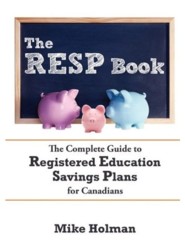Most Canadians are probably familiar with the company BCE (Bell Canada Enterprises) since it is the biggest telephone provider in the country. Last June, the Ontario Teacher’s fund made the winning bid of $42.75 per share for BCE for a total of $35 billion dollars. Since that time the collapse of the credit market has made the deal less profitable for the banks providing the loans which include Citigroup, Deutsche Bank AG and Royal Bank of Scotland. There have been many rumours regarding the deal and if it would go through or not. This is one of the reasons why the stock has been trading between $32 and $38 in recent months which seems pretty cheap considering the shares should be worth $42.75 when the deal is finalized June 30.
Yesterday it was announced that a lawsuit by BCE bond holders was successful in a Quebec court which could mean that the deal doesn’t get done. The lawsuit was intended to block the takeover which the bond holders feel is unfair to them. The case will now go to the Supreme Court of Canada which will delay the takeover at a minimum.
Last fall when the stock was trading at about $38, Mr. Cheap and I had a conversation about BCE and if it was “free” money to buy it at a discount to the takeover purchase price. We both thought it was, but at the same time there was the risk that the deal wouldn’t go through for whatever reason. If that happened we figured the stock would go back to it’s pre-takeover price of around $30 which would be a big loss from a $38 purchase price. Given the limited upside at the time, neither of us went for the “sure thing” and it looks like we made the right choice.
Only time will tell but considering that the banks lending the money want out of the deal and the fact that telcos in general have lost value over the past year (the deal might be valued too high), there are a lot of good reasons why this deal might not happen. Telus which is another large Canadian telco has lost a quarter of its value over the last several months.
What is stopping the BCE takeover deal?
Basically, the investors who own the BCE corporate bonds are upset because the buyout will mean the new BCE will have a lot more leverage (debt) than the old BCE which will reduce the quality of the bonds thereby lowering the bond values. The bond holders want more say in the deal or to get compensation. BCE is arguing that the bond holders should have known there was a risk of a takeover and subsequent down grading of the bonds.
What do the banks think about BCE?
The banks that are providing the financing for the deal are Citigroup, Deutsche Bank AG and Royal Bank of Scotland. Since the deal was created, the credit markets have taken a beating and the banks will likely lose money on the loans. While they are still obligated to go through with the deal, they have a lot of incentive to withdraw if given the ability to do so.
BCE takeover history
pre-2007 – BCE stock price languishes for many years.
February 2007 – two groups make bids for BCE. One bid involved the Teachers, the other the CPP (Canada Pension Plan). Both were turned down.
April 2007 – BCE puts itself up for auction.
June 2007 – Teacher’s group puts in the winning bid of $42.75 per share.
Jan 2008 – BCE bond holders go to court to kill the deal since the bond values have dropped a lot.
Mar 2008 – bond holders lose court case but will appeal.
May 21 – bond holders win key court case to block deal.

 I’m a big fan of exercise in order to stay in shape. One of the things that I try to do is to get some exercise doing normal chores around the house so that I can increase my fitness without having spend extra time or money going to a gym. A great way to get some solid exercise during the summer months is to mow the lawn with a manual lawn mower.
I’m a big fan of exercise in order to stay in shape. One of the things that I try to do is to get some exercise doing normal chores around the house so that I can increase my fitness without having spend extra time or money going to a gym. A great way to get some solid exercise during the summer months is to mow the lawn with a manual lawn mower.